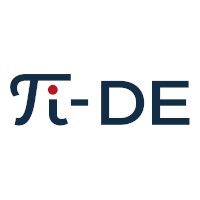A1.2 – Synthesis and supramolecular organisation of chiral pi-conjugated small molecules
Principle Investigator: Prof. Arne Lützen
In TIDE’s first cohort studies in our group were mainly focussed on squaraines − small molecular quadrupolar D−A−D chromophores showing exciting self-assembly behaviour in solution and thin films. This is especially true for chiral derivatives which even proved to be effective absorber materials for polarization-sensitive organic photodiodes as a result of chirality induced control of supramolecular aggregation.
Within TIDE’s second cohort we will continue to work on chiral squaraines and we will extend our efforts towards the investigation of chiral oligo(het-)arylenes which have proven to be promising di- or quadrupolar emitters for light emitting devices. Both, aggregation enhanced or induced circular dichroism or circularly polarized luminescence (CPL) will be used as a very sensitive probe to determine the degree of order in templated thin films grown on graphene, GNR and other 2D materials.
Furthermore, chiral small molecules can also serve as templates for stereoselective self-assembly of non-chiral pi-conjugated molecules, using a sergeant-and-soldier approach that adds a new template idea to our initiative.
Within our consortium we established close collaborations with projects B1.1/D2.1, D1.1 and E1.1. We are currently extending this with projects C1.1 and C2.1. Furthermore, we enjoy fruitful collaborations with additional national and international partners.
References
[1] F. Balzer, M. F. Schumacher, S. Matiello, M. Schulz, J. Zablocki, M. Schmidtmann, K. Meerholz, S. N. Sariciftci, L. Beverina, A. Lützen, M. Schiek, Isr. J. Chem. 62, e202100079 (2022).
[2] R. Bernhardt, M. Manrho, J. Zablocki, L. Rieland, A. Lützen, M. Schiek, K. Meerholz, J. Zhu, T. L. C. Jansen, J. Knoester, P. H. M. Van Loosdrecht, J. Am. Chem. Soc. 144, 19372 (2022).
[3] D. Giavazzi, M. F. Schumacher, L. Grisanti, M. Anzola, F. Di Maiolo, J. Zablocki, A. Lützen, M. Schiek, A. Painelli, J. Mater. Chem. C 11, 8307 (2023).
The ideal candidate has a master’s degree in chemistry with a focus on organic synthesis. He or she should be interested in pi-conjugated and/or chiral molecules and their (chir-)optical properties which we determine together with our partners.
